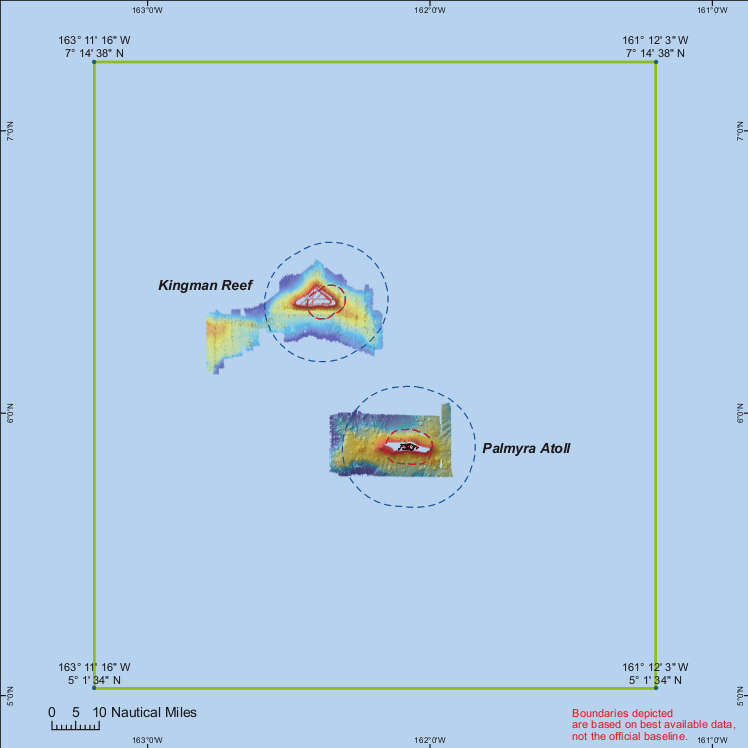Kingman Reef National Wildlife Refuge

Some of the dry land at Kingman Reef National Wildlife Refuge

An aerial view of Kingman Reef
One of the most pristine coral reef atoll ecosystems on Earth, Kingman Reef is located about 930 miles southwest of Hawaii. The emergent land area of the refuge adds up to about 3 acres on the northeastern and southeastern sides of the reef. The submerged area of the NWR amounts to about 483,754 acres, reaching out 12 nautical miles in all directions from the center of the reef.
The land mass of Kingman Reef is essentially two coral spits that are never more than 5 feet above the water. Any kind of weather pushes waves over the land and that contributes to the lack of vegetation. Underwater is another story. However, as abundant are the reefs that make up Kingman, the ecosystem of the reef and its food chain is primarily predator-based. About 85% of the biomass of fish in the area is composed of sharks and other carnivores. That means the competition for food is intense among both the coral species and the 225 species of fish observed in the area.

Sea anemones at Kingman Reef
Giant clams are abundant in the shallows at Kingman Reef. Green sea turtles often stop by to feed and bask in the sun on the coral spits at low tide. Amateur radio operators from the United States have been known to visit about as often as Fish & Wildlife Service personnel. There are more than 200 species of coral found around Kingman Reef, more than three times the number of species growing around the Hawaiian Islands. Deep diving submersibles have found deep water gold coral colonies that might be up to 5,000 years old.
The reef was used by the US Navy until a dock and landing strip were built at nearby Palmyra Atoll in the late 1930's. Pan American Airlines landed "flying boats" on their way to New Zealand in the lagoon, beginning in 1937 and ending in 1938 after one of their aircraft exploded near American Samoa in January that year. The Navy gave over jurisdiction to the US Fish & Wildlife Service on September 1, 2000 and the property is now included in the Pacific Remote Islands Marine National Monument.

Some of the fish at Kingman Reef

Other photos and maps are courtesy of the US Fish & Wildlife Service

Pacific Remote Islands Marine National Monument map